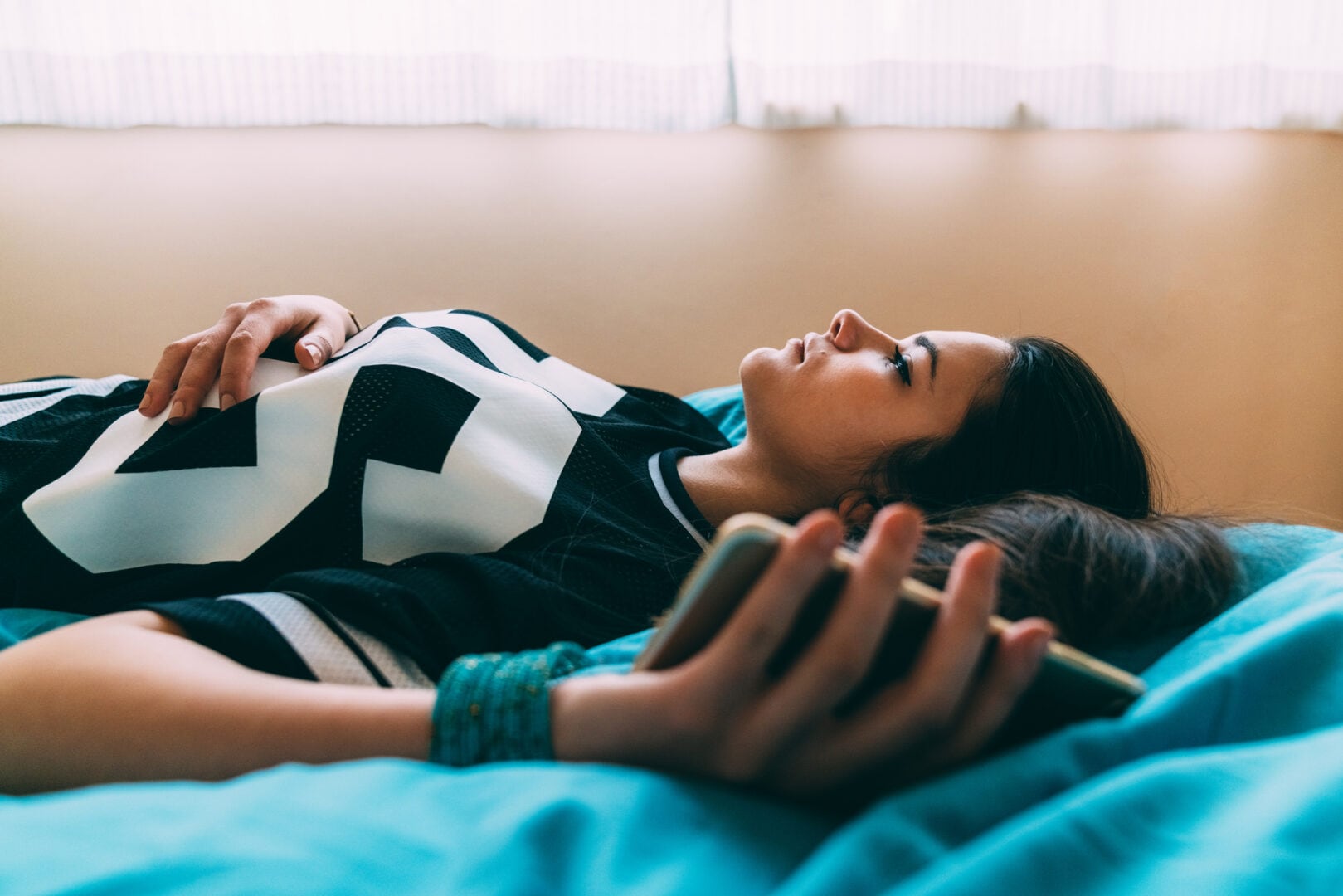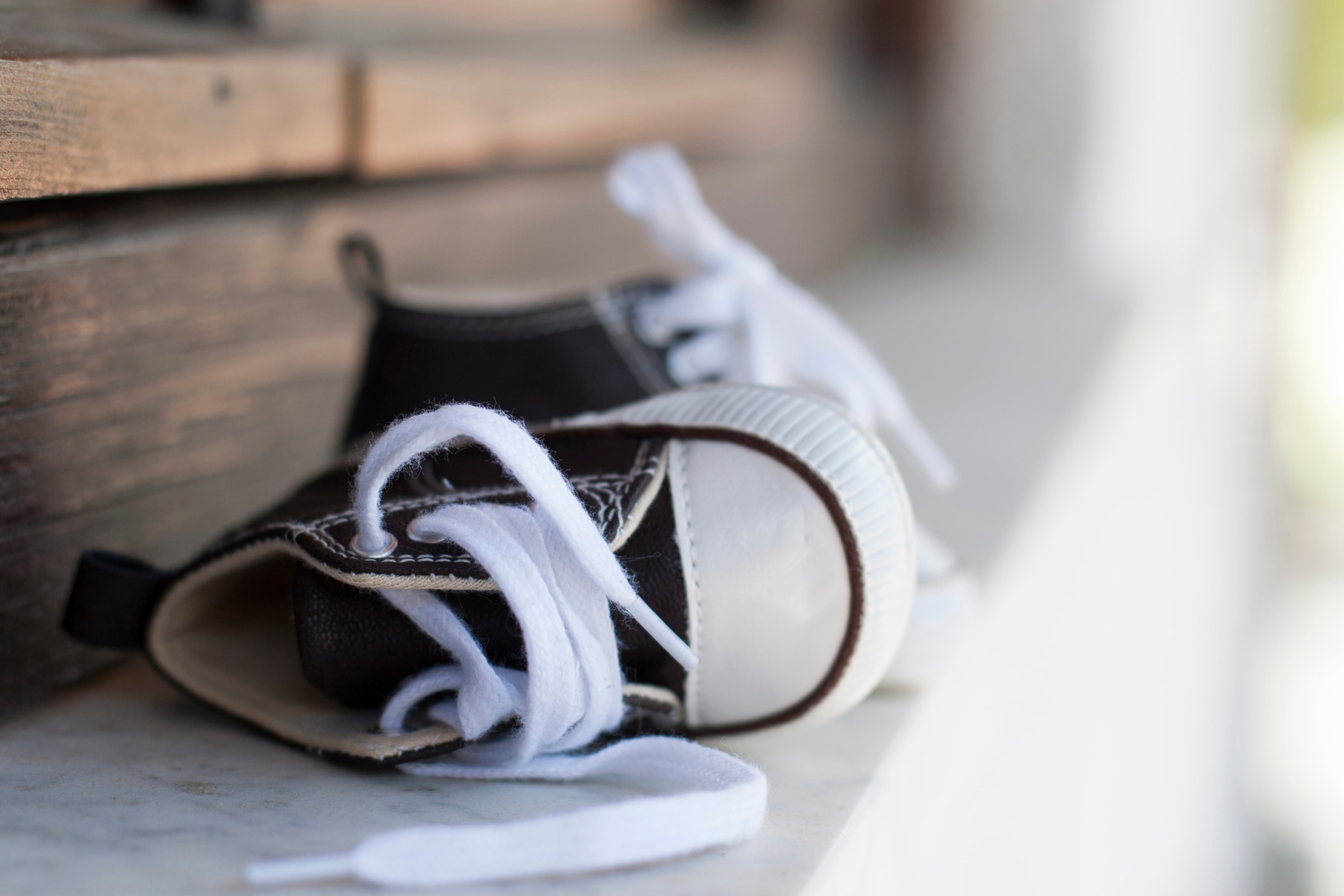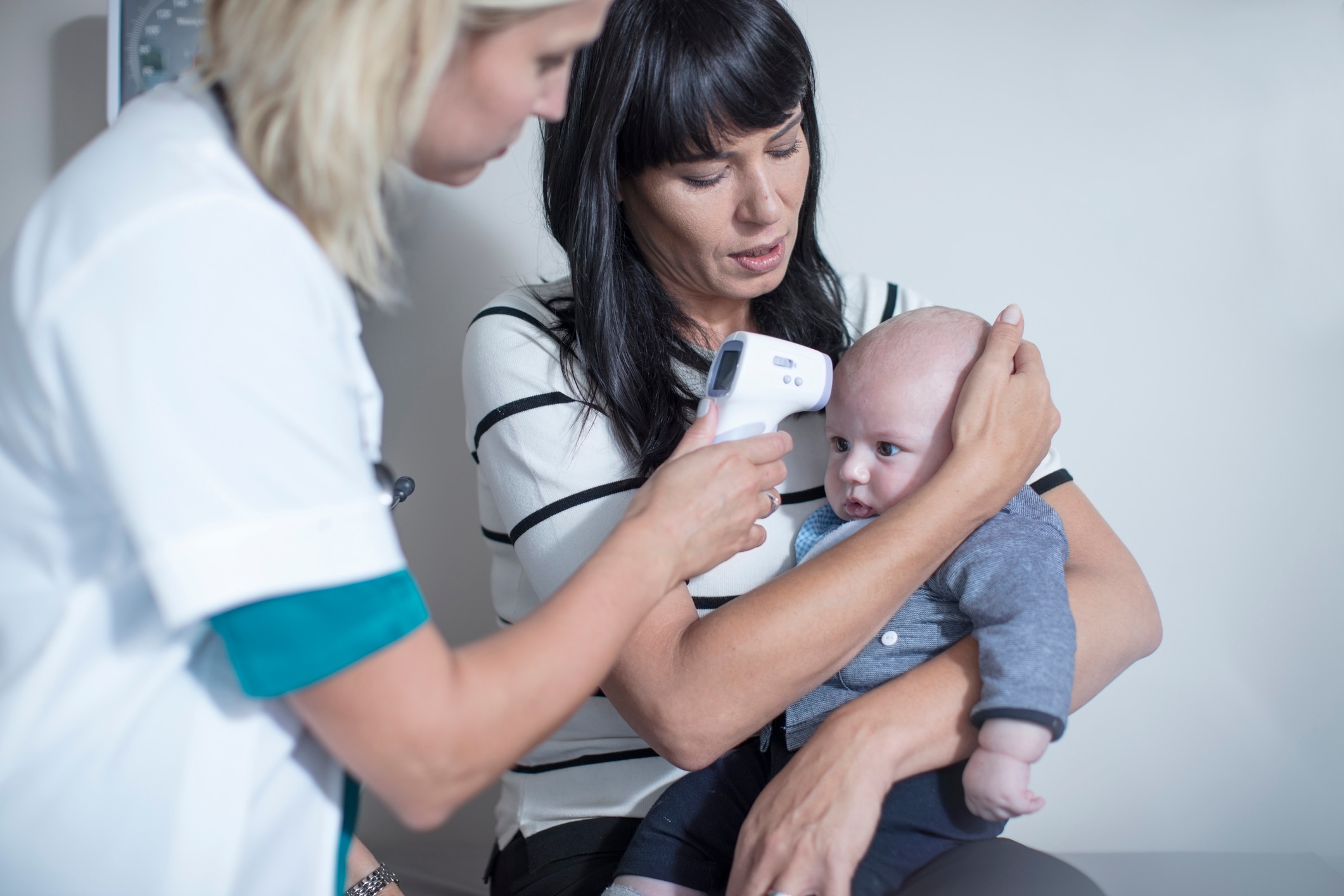Out in the world, teenagers seem to live the life. They’re boisterous; they’re giggly; they travel in packs and usually have fun drinks, like bubble tea, in tow. But the reality is, being teen can be hard.
“The teenage years bring on so much change, especially for teenage girls,” explains Dr. Christine M. Crawford, associate medical director for the National Alliance on Mental Illness (NAMI). “This includes body changes, appearances, social and school life — and most importantly, as the body matures, so does the brain. With all the new changes in teenagers’ lives, new stresses and worries can come up about their family, friends, school, body, future and identity, causing many signs of mental health conditions to emerge during this developmental stage.”
While adolescents have always been susceptible to mental health disorders, such as depression and anxiety, the past few years have unearthed some seriously sobering stats — particularly for teen girls. In February of this year, the Centers for Disease Control and Prevention (CDC) reported an uptick in emergency department (ED) visits in 2020 for females 12-17 due to a number of conditions, including eating disorders, tics, trauma and anxiety. Additionally, in 2021, the CDC reported that “during February 21–March 20, 2021, suspected suicide attempt ED visits were 50.6% higher among girls aged 12–17 years than during the same period in 2019,” while suspected suicide attempt ED visits for boys the same age increased 3.7%.
In other words: The teenage girls aren’t alright. But fortunately, there’s hope. From causes and what to look for to what to do, here’s what experts want you to know about anxiety and depression in teenage girls, as well as other adolescent mental health concerns.
Why do girls seem to be more affected than boys?
While there has undoubtedly been an increase in mental health issues in girls over the past few years, it’s important to note that, generally speaking, girls are more likely to report symptoms and seek help than boys. In other words, getting a true gauge of how teen boys are feeling isn’t so easy.
“While reports show that teen girls saw an increase in suspected suicide ED visits, that number isn’t as clear as it appears,” notes Jeremy Pieper, a licensed marriage and family therapist in Madison, Wisconsin, who specializes in trauma-informed care, adolescents, suicide safe care and de-escalation techniques. “Boys tend to underreport their depressive symptoms, have more lethal attempts and engage in risk-taking behaviors rather than more easily recognizable suicidal behavior. These factors suggest that teen boys are struggling more than the ED data suggests.”
That being said, Pieper notes that it is still likely that teen girls are experiencing more distress overall. “The pandemic likely exacerbated risk factors that disproportionately affect teen females,” he says. “In person, social connection was disrupted. More time was spent online, and the online pressures for teen females are more likely to lead to detrimental effects.”
“More time was spent online, and the online pressures for teen females are more likely to lead to detrimental effects.”
— JEREMY PIEPER, LICENSED MARRIAGE AND FAMILY THERAPIST
It’s also important to note that the rate of ED visits for those that identify as transgender or gender fluid is not shown in the CDC data. “This population has historically already had higher rates of suicide attempts, with as many as 35% attempting suicide,” Pieper says. “Preliminary polling data from the Trevor Project shows that the LGBTQ+ population in general has reported an increase in anxiety and thoughts of suicide.”
What’s causing the uptick of anxiety and depression in teenage girls?
There are a number of factors that can trigger depression and anxiety in teenagers, including changing hormones, academic and peer pressure and childhood trauma, to name a few — but the recent uptick in teen girls’ mental health issues glaringly points to two things: the pandemic and social media, with the latter being increased by the former.
Social media
“Research has shown that girls are more affected by the harmful effects related to excessive social media use, and during the pandemic, there was a dramatic rise in social media use and screen time,” notes Hailey Shafir, a mental health counselor and addiction specialist in Raleigh, North Carolina.
Here’s how social media is negatively, and disproportionately, affecting teen girls:
Mental health issues are glorified. “Mental health disorders are glorified on social media and this potentially affects teen girls,” says Dr. Ashley-Marie Berry, assistant professor of psychiatry at Cincinnati Children’s Hospital Medical Center. “Algorithms on social media increase exposure to unhealthy coping strategies such as self-harm or use of substances, and teenage girls who are susceptible to mental health disorders are targeted directly. Recent evidence and studies have shown a positive correlation between social media use and suicidal ideation.”
Too much at the wrong time. “Adolescence is a time of dramatic neurological development, and while this is occuring, the brain is vulnerable,” Berry continues. “Not only do experiences, positive or negative, affect this process, similarly exposures to trauma and other’s experiences via social media can negatively impact these brain processes.” In other words: Where you may be able to shake off certain images and messages online, your teen isn’t wired that way yet.
Unrealistic beauty expectations. While body positivity has gotten more airtime in recent years, it’s no match for filters and for, well, jerks. “There may be more advocacy for positive body images online, but there is also a lot of fat shaming,” notes Lena Suarez-Angelino, licensed clinical social worker and empowerment coach in Woodbridge, New Jersey, who specializes in self-esteem, body image and mental health for teens. “At the same time, the filters on social media add pressure — to teen girls especially — as they can make skin look flawless while adding things like makeup and lashes. Once the filters are removed, users feel unattractive and are left with unrealistic beauty expectations.”
On the flip side, “boys tend to spend more time on social media sites like YouTube and TikTok, where their time is spent finding entertaining content, rather than content they use to compare themselves to others,” according to Shafir.
“There may be more advocacy for positive body images online, but there is also a lot of fat shaming.”
— LENA SUAREZ-ANGELINO, SOCIAL WORKER AND EMPOWERMENT COACH
#LifeGoals. Similar to unattainable beauty standards, Suarez-Angelino notes that there’s pressure to have the Instagram “aesthetic life.” “Teen girls often forget that social media is not reality, causing an increase in disappointment, which can lead to depression due to ‘life not looking like everyone else’s on social media.’”
Hooked on ‘likes.’ Teen girls have more of a tendency to share content that will get ‘liked,’ says Shafir. “Whether they’re posting edited pictures or copying viral posts and trending topics, teen girls’ posts tend to be more geared towards gaining the most likes, follows and comments,” she explains. “Getting this kind of online validation can trigger the release of dopamine in the brain, a powerful brain chemical linked to addiction that keeps them hooked.”
FOMO. FOMO (fear of missing out) is another common result of social media for teen girls, according to Shafir, as they’re “more likely to feel left out when seeing friends posts online.”
The pandemic
In addition to increased social media use being a byproduct of the pandemic, there’s the pandemic itself. Here are a few ways the past two years have negatively impacted teen girls, according to Berry, Suarez-Angelino and Pieper:
- Unpredictability (going from in-person to virtual many times over).
- Disappointment from “rites of passage” being canceled.
- Under-utilized mental health resources. “Many people were told not to report to the ER or clinics during the pandemic to reduce spread of COVID,” notes Berry. “Many outpatient clinics closed and access to resources were limited.”
- Increased isolation.
- Increased exposure to family dynamics and stressors (particularly caregivers who were struggling with their own mental health).
- Lack of privacy (particularly if they share a room with a sibling).
- Loss of loved ones or housing and food insecurity.
- Loss of daily rhythms that provide predictability.
“Many people were told not to report to the ER or clinics during pandemic to reduce spread of COVID. Many outpatient clinics closed and access to resources were limited.”
— DR. ASHLEY-MARIE BERRY, ASSISTANT PROFESSOR OF PSYCHIATRY
“The notable worsening of mental health among teens could be due to many of these factors,” notes Pieper. “That said, all of those risk factors over a prolonged and unpredictable period had an impact that we are only at the beginning of understanding.”
What adolescent mental health red flags to watch for
According to Crawford, it isn’t always easy for parents to determine whether certain behaviors are normal or a symptom of a mental health condition in their teenager, as hormones do affect routines and behaviors. However, she notes, “the main signs to look for are irregular changes in their everyday routine.”
“The main signs to look for are irregular changes in their everyday routine.”
— DR. CHRISTINE M. CRAWFORD, ASSOCIATE MEDICAL DIRECTOR
Here, more specific red flags, according to Crawford and Suarez-Angelino:
- Increased isolation.
- Increased fear or worry.
- Irritability and agitation.
- Loss of interest in activities once enjoyed.
- Loss of interest in friends.
- Sense of hopelessness.
- Sleep changes.
- Increase or decrease in appetite.
- Increase or decrease in sleep.
- Restlessness.
- Frequent headaches or stomach aches.
How to help a teen who’s struggling
One of the most important things parents and caregivers can do when a teen is struggling is take notice. “About half of all people who experience a mental health condition in their lifetime begin experiencing symptoms before the age of 14, but many family members and teens do not notice them for several years later,” Crawford explains. “One way to help your child is by bringing them to their pediatrician to talk about their anxiety or depression symptoms, create a treatment plan and connect with a mental health professional.”
Other positive outlets Crawford recommends are:
- Exercise.
- Meditation and mindfulness practices.
- Peer support groups.
It’s also important to have a supportive, open environment at home. Here’s what Pieper recommends for being vigilant about teen mental health on the front end:
1. Talk often. “Have discussions and be open,” he says. “Creating an environment where people are open about how they are doing, struggling or not, allows safety for sharing.”
2. Listen without judgment. “Take their mental health seriously. Nothing shuts down a conversation quicker than when someone says ‘you’re overreacting’ or ‘just give it time.’ Ask questions to fully understand and ask what they need.”
3. Be a screen time role model. Teach, talk about, and model good citizenship on social media rather than banning it, he recommends.
“Take their mental health seriously. Nothing shuts down a conversation quicker than when someone says ‘you’re overreacting’ or ‘just give it time.’ Ask questions to fully understand and ask what they need.”
— JEREMY PIEPER, LICENSED MARRIAGE AND FAMILY THERAPIST
Also, Suarez-Angelino recommends following positive mental health accounts by licensed professionals. A few of her favorites on TikTok are:
4. Ask specific questions about the teen’s day. “‘How was your day?’ can be a good opener but doesn’t often give the information needed,” Pieper notes. “Have fun with it so it doesn’t seem like an interrogation.”
5. Don’t make mental health disorders taboo. “Have discussions or consume media together that shows people overcoming their depression,” Pieper says. “There is a boosting quality to seeing that depression is not the end.”
Finally, be present and approachable with your teen. “Really put yourself in their shoes,” Suarez-Angelino says. “The pandemic is a new experience for everyone, but especially for teenagers, when socialization should be at its peak. Instead of making assumptions, always leave room for open conversations and discussions, which will be beneficial to everyone.”
If you suspect a teen is struggling with thoughts of suicide, you can contact the National Suicide Hotline at 1-800-273-TALK (8255), call your local crisis line, dial 911 (starting July 16 there will be a new line specific for suicide, 988) or text the Crisis Text Line to 741741.





